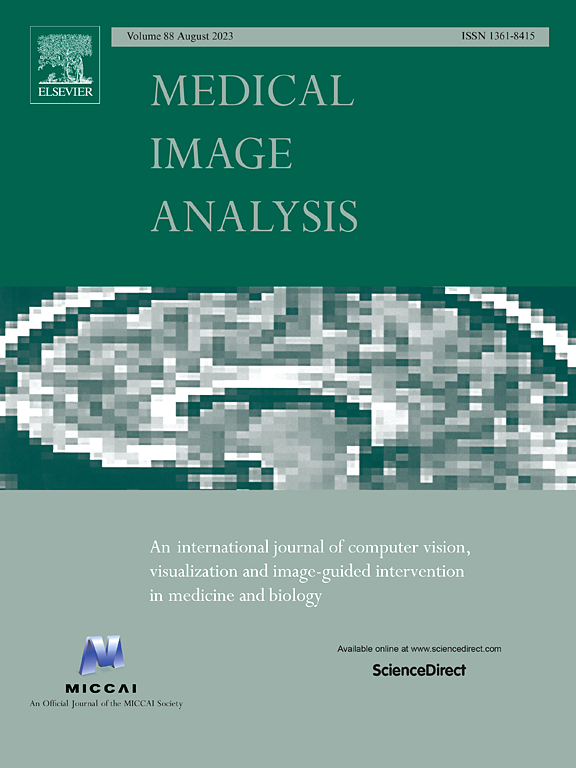Medical SAM adapter: Adapting segment anything model for medical image segmentation
IF 10.7
1区 医学
Q1 COMPUTER SCIENCE, ARTIFICIAL INTELLIGENCE
引用次数: 0
Abstract
The Segment Anything Model (SAM) has recently gained popularity in the field of image segmentation due to its impressive capabilities in various segmentation tasks and its prompt-based interface. However, recent studies and individual experiments have shown that SAM underperforms in medical image segmentation due to the lack of medical-specific knowledge. This raises the question of how to enhance SAM’s segmentation capability for medical images. We propose the Medical SAM Adapter (Med-SA), which is one of the first methods to integrate SAM into medical image segmentation. Med-SA uses a light yet effective adaptation technique instead of fine-tuning the SAM model, incorporating domain-specific medical knowledge into the segmentation model. We also propose Space-Depth Transpose (SD-Trans) to adapt 2D SAM to 3D medical images and Hyper-Prompting Adapter (HyP-Adpt) to achieve prompt-conditioned adaptation. Comprehensive evaluation experiments on 17 medical image segmentation tasks across various modalities demonstrate the superior performance of Med-SA while updating only 2% of the SAM parameters (13M). Our code is released at https://github.com/KidsWithTokens/Medical-SAM-Adapter.

医学SAM适配器:适用于医学图像分割的任意分割模型
由于SAM在各种分割任务中的出色能力和基于提示的界面,SAM模型最近在图像分割领域获得了广泛的应用。然而,最近的研究和个体实验表明,由于缺乏医学专业知识,SAM在医学图像分割方面表现不佳。这就提出了如何增强SAM对医学图像的分割能力的问题。我们提出了医学SAM适配器(Medical SAM Adapter, Med-SA),这是最早将SAM集成到医学图像分割中的方法之一。Med-SA使用一种轻量级但有效的自适应技术,而不是对SAM模型进行微调,将特定领域的医学知识纳入分割模型。我们还提出了空间深度转置(SD-Trans)来使2D SAM适应3D医学图像,并提出了超提示适配器(hypp - adpt)来实现提示条件适应。在17个不同模式的医学图像分割任务中进行的综合评价实验表明,Med-SA在仅更新2%的SAM参数(13M)的情况下具有优越的性能。我们的代码发布在https://github.com/KidsWithTokens/Medical-SAM-Adapter。
本文章由计算机程序翻译,如有差异,请以英文原文为准。
求助全文
约1分钟内获得全文
求助全文
来源期刊

Medical image analysis
工程技术-工程:生物医学
CiteScore
22.10
自引率
6.40%
发文量
309
审稿时长
6.6 months
期刊介绍:
Medical Image Analysis serves as a platform for sharing new research findings in the realm of medical and biological image analysis, with a focus on applications of computer vision, virtual reality, and robotics to biomedical imaging challenges. The journal prioritizes the publication of high-quality, original papers contributing to the fundamental science of processing, analyzing, and utilizing medical and biological images. It welcomes approaches utilizing biomedical image datasets across all spatial scales, from molecular/cellular imaging to tissue/organ imaging.
 求助内容:
求助内容: 应助结果提醒方式:
应助结果提醒方式:


